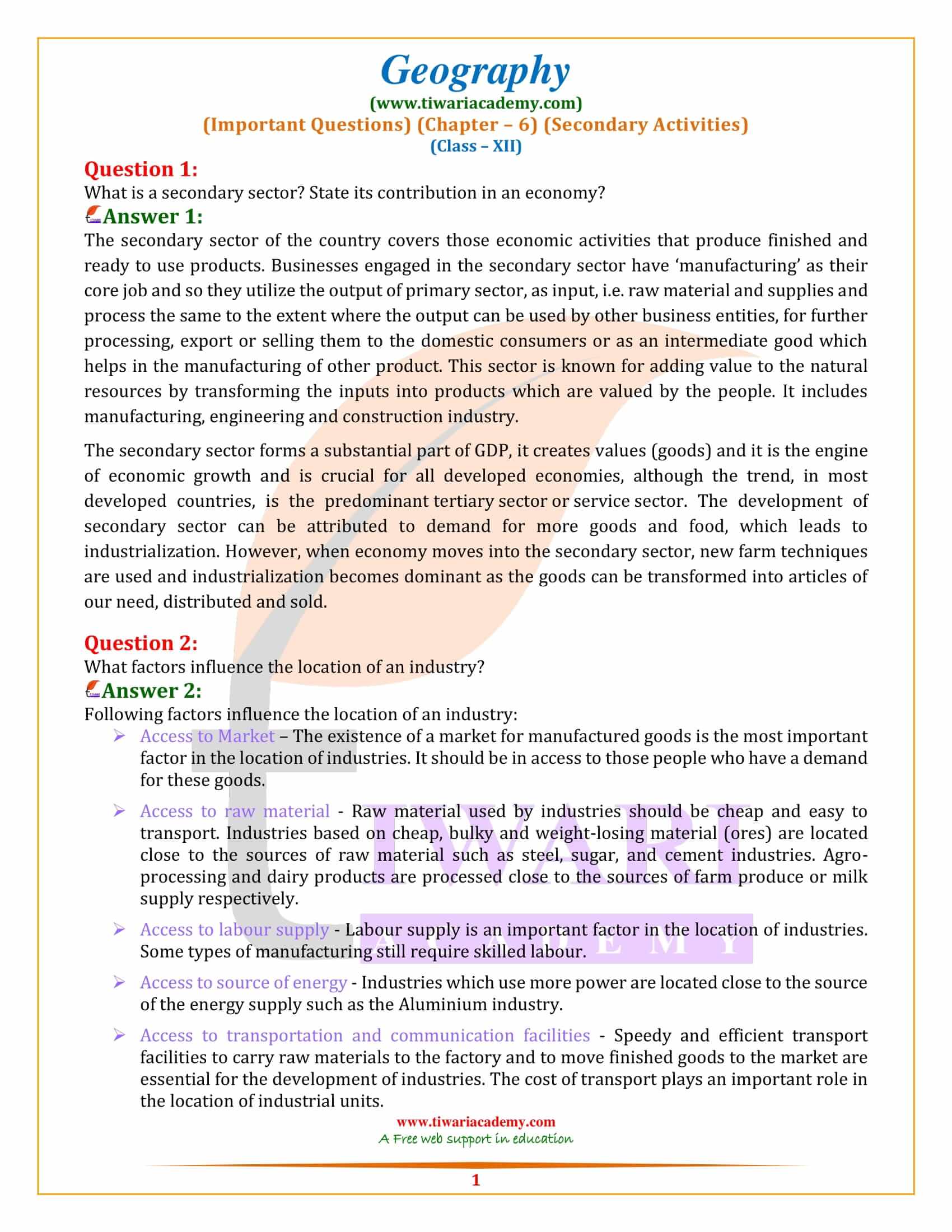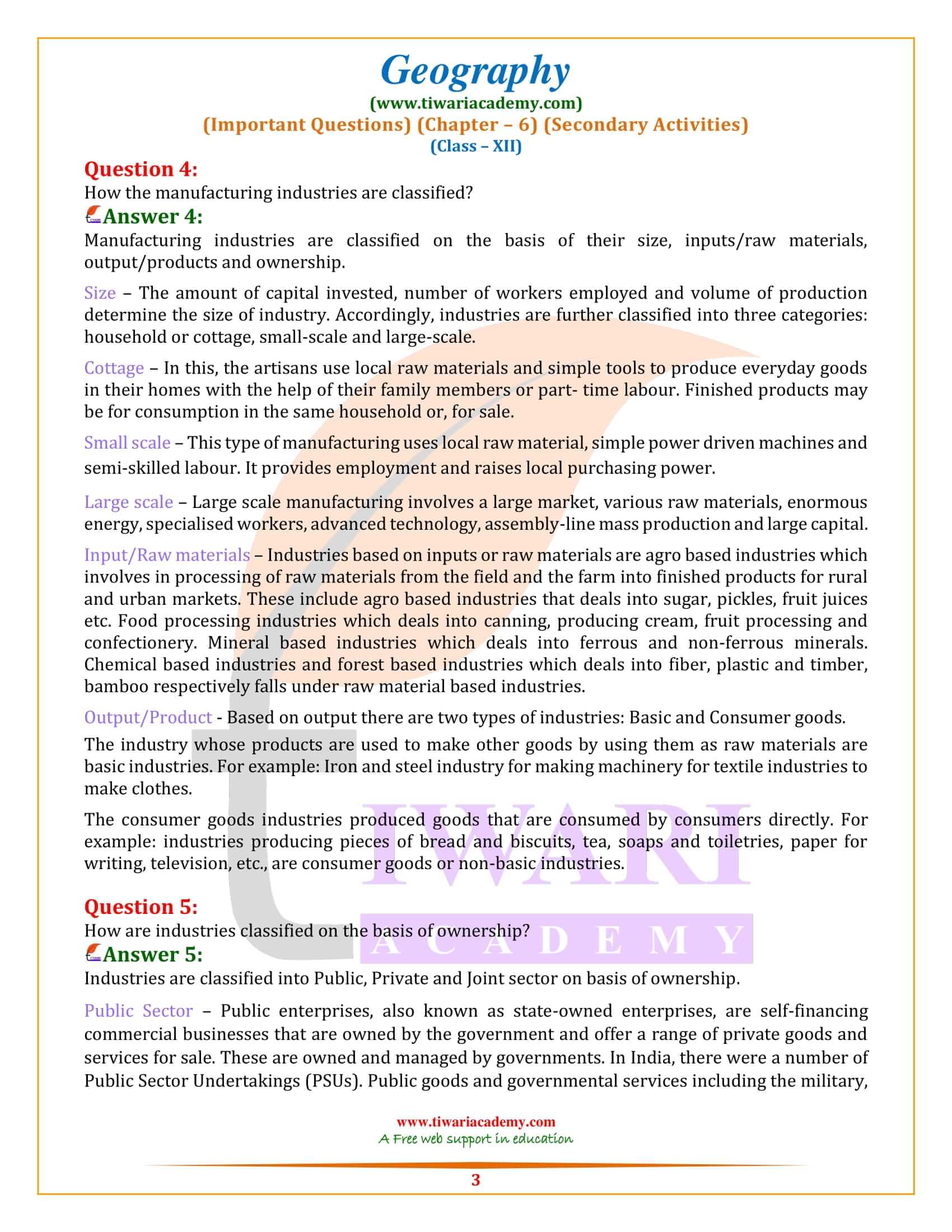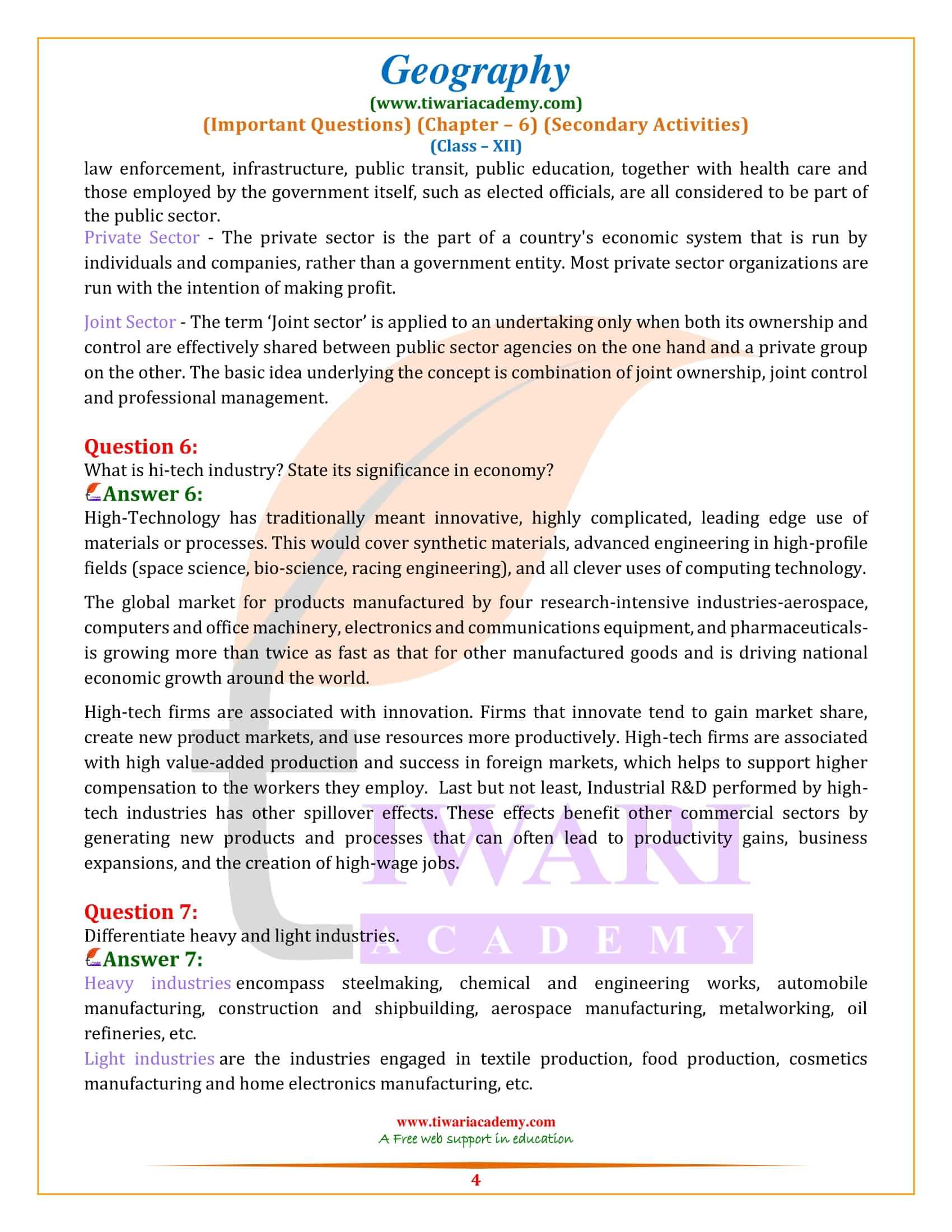NCERT Solutions for Class 12 Geography Chapter 6 Important Questions of Secondary Activities prepared for new academic session 2025-26. Class 12 Geography Students can get all the extra question answers of chapter 6 in Fundamentals of Human Geography for the revision.
Class 12 Geography Chapter 6 Important Questions
Class 12 Geography Chapter 6 Important Extra Question Answers
What is a secondary sector? State its contribution in an economy?
The secondary sector of the country covers those economic activities that produce finished and ready to use products. Businesses engaged in the secondary sector have ‘manufacturing’ as their core job and so they utilize the output of primary sector, as input, i.e. raw material and supplies and process the same to the extent where the output can be used by other business entities, for further processing, export or selling them to the domestic consumers or as an intermediate good which helps in the manufacturing of other product. This sector is known for adding value to the natural resources by transforming the inputs into products which are valued by the people. It includes manufacturing, engineering and construction industry.
The secondary sector forms a substantial part of GDP, it creates values (goods) and it is the engine of economic growth and is crucial for all developed economies, although the trend, in most developed countries, is the predominant tertiary sector or service sector. The development of secondary sector can be attributed to demand for more goods and food, which leads to industrialization. However, when economy moves into the secondary sector, new farm techniques are used and industrialization becomes dominant as the goods can be transformed into articles of our need, distributed and sold.
What factors influence the location of an industry?
Following factors influence the location of an industry:
Access to Market – The existence of a market for manufactured goods is the most important factor in the location of industries. It should be in access to those people who have a demand for these goods.
Access to raw material – Raw material used by industries should be cheap and easy to transport. Industries based on cheap, bulky and weight-losing material (ores) are located close to the sources of raw material such as steel, sugar, and cement industries. Agro-processing and dairy products are processed close to the sources of farm produce or milk supply respectively.
Access to labour supply – Labour supply is an important factor in the location of industries. Some types of manufacturing still require skilled labour.
Access to source of energy – Industries which use more power are located close to the source of the energy supply such as the Aluminium industry.
Access to transportation and communication facilities – Speedy and efficient transport facilities to carry raw materials to the factory and to move finished goods to the market are essential for the development of industries. The cost of transport plays an important role in the location of industrial units.
How are industries classified on the basis of ownership?
Industries are classified into Public, Private and Joint sector on basis of ownership.
Public Sector – Public enterprises, also known as state-owned enterprises, are self-financing commercial businesses that are owned by the government and offer a range of private goods and services for sale. These are owned and managed by governments. In India, there were a number of Public Sector Undertakings (PSUs). Public goods and governmental services including the military, law enforcement, infrastructure, public transit, public education, together with health care and those employed by the government itself, such as elected officials, are all considered to be part of the public sector.
Private Sector – The private sector is the part of a country’s economic system that is run by individuals and companies, rather than a government entity. Most private sector organizations are run with the intention of making profit.
Joint Sector – The term ‘Joint sector’ is applied to an under¬taking only when both its ownership and control are effectively shared between public sector agencies on the one hand and a private group on the other. The basic idea underlying the concept is combination of joint ownership, joint control and professional management.
What is hi-tech industry? State its significance in economy?
High-Technology has traditionally meant innovative, highly complicated, leading edge use of materials or processes. This would cover synthetic materials, advanced engineering in high-profile fields (space science, bio-science, racing engineering), and all clever uses of computing technology.
The global market for products manufactured by four research-intensive industries-aerospace, computers and office machinery, electronics and communications equipment, and pharmaceuticals-is growing more than twice as fast as that for other manufactured goods and is driving national economic growth around the world.
High-tech firms are associated with innovation. Firms that innovate tend to gain market share, create new product markets, and use resources more productively. High-tech firms are associated with high value-added production and success in foreign markets, which helps to support higher compensation to the workers they employ. Last but not least, Industrial R&D performed by high-tech industries has other spillover effects. These effects benefit other commercial sectors by generating new products and processes that can often lead to productivity gains, business expansions, and the creation of high-wage jobs.
Differentiate heavy and light industries.
Heavy industries encompass steel making, chemical and engineering works, automobile manufacturing, construction and shipbuilding, aerospace manufacturing, metalworking, oil refineries, etc.
Light industries are the industries engaged in textile production, food production, cosmetics manufacturing and home electronics manufacturing, etc.





